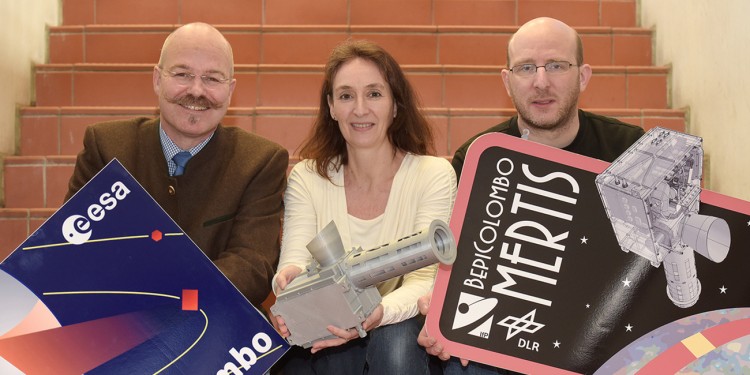
Planetologists at University of Münster receive further funding for Mercury mission
To solve the mysteries surrounding Mercury, the European Space Agency ESA and the Japan Aerospace Exploration Agency JAXA are planning to explore the planet with two probes in the BepiColombo space mission. On board the European probe is the MERTIS thermal infrared spectrometer under the supervision of a team led by Prof. Harald Hiesinger at the Institute of Planetology at the University of Münster. The German Aerospace Center (DLR) has now provided 2.6 million euros of funding for the next five years for further scientific work on the project and its supervision.
The new funding phase follows on from the previous ones, which comprised preliminary studies, development work and the construction of a flight model. The BepiColombo mission is to set off in 2018. The space probes are due to reach Mercury in 2025.
Mercury is the innermost planet in our solar system. "Because of its proximity to the sun it is exposed to extreme conditions", explains Harald Hiesinger. From a geological point of view, the planet is highly interesting, he adds, as it has an unusually large core and also – despite high surface temperatures – ice in the polar craters, which are permanently in shadow and thus very cold. The MERTIS spectrometer will supply detailed information on the mineralogy and composition of the planet’s surface. "The instrument is a masterpiece of German engineering", is Hiesinger’s enthusiastic judgement. "With a mass of only around three kilogrammes and an average power consumption of ten watts, it has been possible to miniaturize a desk-sized laboratory spectrometer and make it fit for use in space conditions."
The MERTIS team can now prepare for the take-off and flight phase to Mercury. "This new funding will continue to enable us to pursue our ambitious goals in the exploration of this planet", says Hiesinger. "It opens up a lot of interesting opportunities to bring young scientists and students into such an exciting mission."
The researchers will carry out preparatory work for a later evaluation of the data for which, among others, the spectral laboratory at the Institute of Planetology will be used. Further work carried out at the Institute comprises the modelling of thermal conditions on Mercury, as well as space weathering studies. This entails bombarding the surface with micro-meteorites and solar wind particles, thus changing the optical properties of the surfaces of atmosphereless bodies.
As project manager Dr. Iris Weber from the Institute of Planetology emphasizes: "There is still a lot to do, and we can hardly wait to enter the orbit around Mercury. After more than 20 years of intense preparation, it will then be time to reap the scientific benefits."
The project partners
MERTIS was developed and built over the past few years in collaboration with several research institutes and industrial companies. The project partners are the DLR Institute of Planetary Research and the DLR Institute of Optical Sensory Systems (Berlin), OHB System (Bremen), Astro- und Feinwerktechnik Adlershof (Berlin), the Polish Institute of Cosmos Research in Warsaw and the engineering firm Ulmer in Frankfurt an der Oder.
Information on MERTIS
"MERTIS" stands for "Mercury Radiometer and Thermal Infrared Spectrometer". It uses heat radiation – so-called thermal infrared – to acquire information on the mineralogical composition of the surface of the planet. In 2018, MERTIS will be one of a total of eleven European instruments of the Mercury Planetary Orbiter (MPO) to be sent on a seven-year journey to the innermost planet of our solar system. MPO is one of a number of important components of the BepiColombo mission of the European Space Agency ESA.
